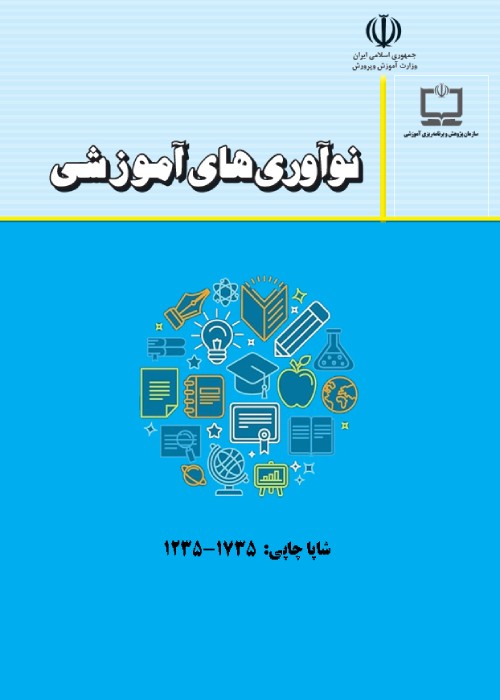Investigating the effect of teaching the course creativity development in children upon creativity improvement of third grade female students in the field of babysitting at Shiraz technical high schools
Abstract:
For the purpose of studying the effect of the course creativity development in children (that is one of the courses taken by third grade female students in the field of babysitting at the technical high school) on the creativity improvement of the same students, a semi-experimental method with the control group and pretest-posttest was used and a sample consisting of 108 third year female students of Shiraz technical high schools were selected based on GAP of 14-17(out of 20) and an IQ of 90-110. Of this group, 54 students in the field of babysitting were considered as the experimental group. They passed the same course unit during the school year. The other 54 subjects were selected from among other fields of study in the technical high schools as the control group. This group had not taken the course unit in question. The most important question was whether providing the course "creativity development in children" was effective upon creativity improvement of students in the field of babysitting. To answer the questions, both groups took a pretest by Torrance verbal creativity test (from A) at the beginning of the school year and at the end of the year. Again, both groups, the experimental and the control one were evaluated using form B of Torrance test (post- test). Creativity scores of the two groups and the scores of the experimental group (pretest and post-test) were compared by t-test. Findings showed an increase in the creativity score of the students in the field of babysitting (the experimental group). The scores of this group as compared with those of the control group showed significant superiority in the elements fluidity, expansion, and the total score as well. In addition, based on the multivariate regression findings of the independent variables, the field of study, mother, job and student's achievement (GAP) were better predictors for the dependent variable, which is creativity.
Language:
Persian
Published:
Quarterly Journal of Educational Innovations, Volume:4 Issue: 13, 2006
Page:
58
magiran.com/p425401
دانلود و مطالعه متن این مقاله با یکی از روشهای زیر امکان پذیر است:
اشتراک شخصی
با عضویت و پرداخت آنلاین حق اشتراک یکساله به مبلغ 1,390,000ريال میتوانید 70 عنوان مطلب دانلود کنید!
اشتراک سازمانی
به کتابخانه دانشگاه یا محل کار خود پیشنهاد کنید تا اشتراک سازمانی این پایگاه را برای دسترسی نامحدود همه کاربران به متن مطالب تهیه نمایند!
توجه!
- حق عضویت دریافتی صرف حمایت از نشریات عضو و نگهداری، تکمیل و توسعه مگیران میشود.
- پرداخت حق اشتراک و دانلود مقالات اجازه بازنشر آن در سایر رسانههای چاپی و دیجیتال را به کاربر نمیدهد.
In order to view content subscription is required
Personal subscription
Subscribe magiran.com for 70 € euros via PayPal and download 70 articles during a year.
Organization subscription
Please contact us to subscribe your university or library for unlimited access!


